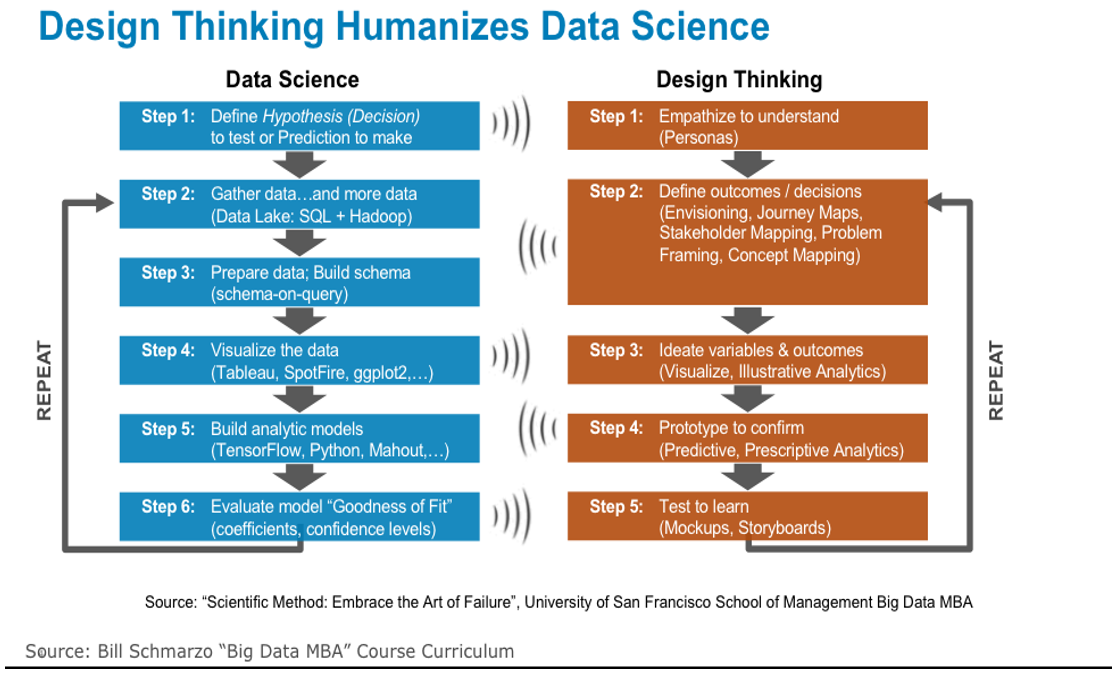Data Science is always being a hot topic in the market. Many people are seeking for Data Scientists to help their businesses. However, there are lots of failure cases in different industries. Why?
Many technical people including data scientists are always focused on their own technical aspects like statistical model, machine learning algorisms, etc. On the other hand, the needs of end users are being overlooked. There is a gap between data scientists and other stakeholders not only for the understanding on the technical analysis but also the knowledge on the core business pain points.
Tim Brown: “The mission of design thinking is to translated observations into insights and insights into products and services that will improve lives”
Figure 1: Design Thinking Humanizes Data Science

Note: this diagram explains the whole data science journey with design thinking
Design thinking ensures to create solutions that are realistic and executable. This is aligned to Data Scientists should answer the proper business problems by the use of data based on the business environment or any other correlated areas.
Design thinking puts user and their needs as the starting point of developing new product and solution and it is vital to understand
- for whom we are working with
- for what we are designing
- what is the problem customer experiencing
- how to improve the performance and achieve scalability.
There is a case we have to think about – a new job position being introduced by a banking corporation to translate Data Science work to users.
- Related News: https://www.waterstechnology.com/data-management/4456596/dbs-bank-grows-its-team-of-data-translators
To be honest, it is not reasonable to hire extra resources for handling this piece of work and it is part of the responsibility for the professional himself to explain what he had done.
For the data science implementation, it is suggested to read my article – “The Road to Analytic Success – 5 Steps BADIR Approach”. The figure 1 shows the steps of data science implementation similar to the BADIR approach. Then, we can apply the Design Thinking steps directly to the Data Science implementation like the diagram. Also, Data Analytic is always a journey and the iteration methodology should be applied along the cycle. It is suggested to understand more about the Iteration Project Management Approach by reading another article – “Only 1 Project Management Approach in my Data Science Journey”.
Each data science solution is uniquely fit for a particular environment and business problem. Design thinking should be a collaborative and informed process to focus on the end-users, understand the workflow, and provide pin-point answers for the problems. However, it is expected to have several iterations on the whole development process in order to complete the data science solutions for the end-users.
Samuel Sum
Data Science Evangelist (CDS, SDi)
Vice President (AS)

